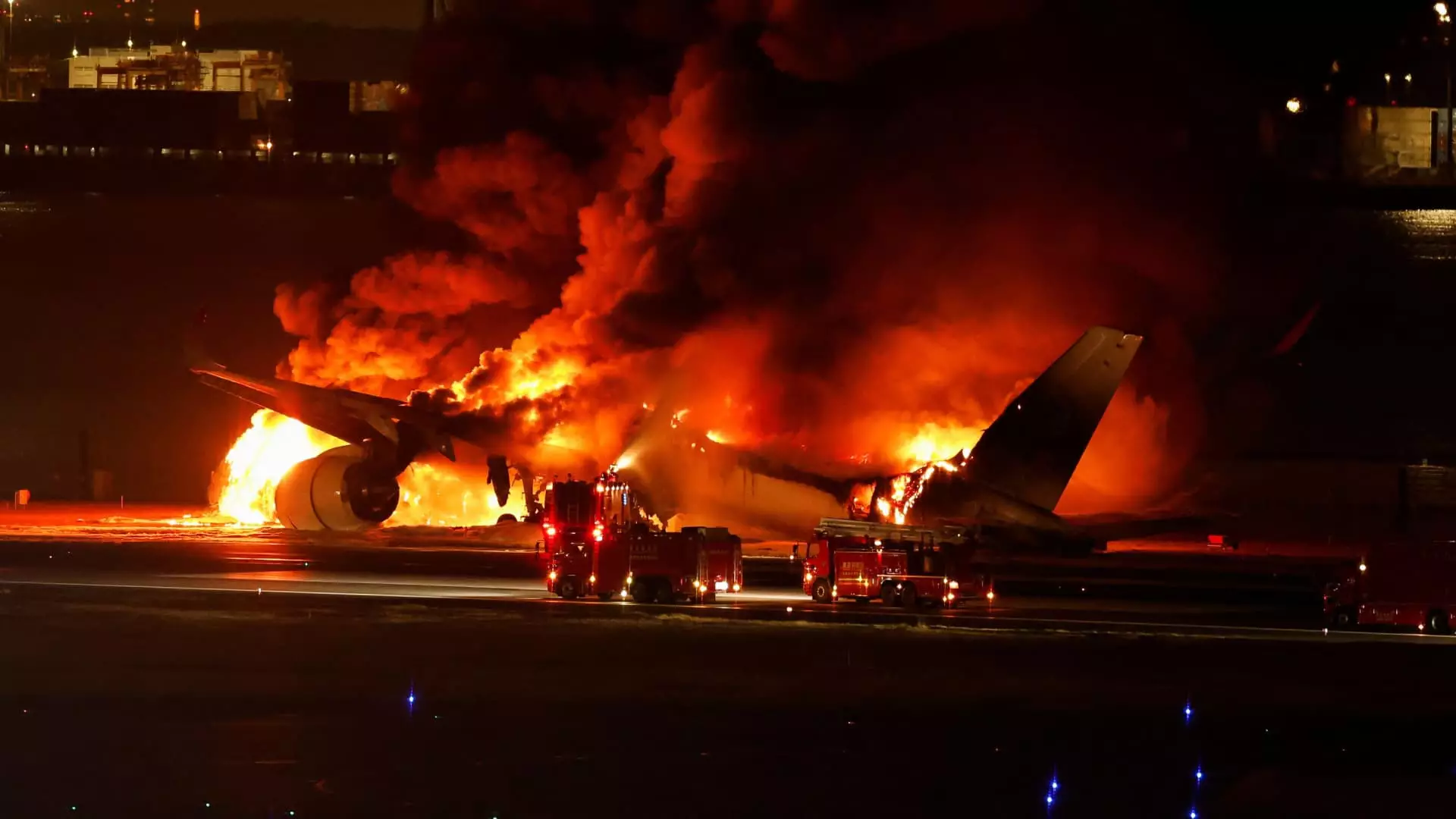A horrifying incident unfolded at Tokyo’s Haneda airport on Tuesday when a Japan Airlines flight collided with a Japan Coast Guard aircraft, resulting in a blaze that engulfed the plane. According to Tokyo police, five out of the six crew members on the Coast Guard aircraft lost their lives in the collision. The injured pilot was able to evacuate but sustained severe injuries. Initial reports suggest that the Coast Guard aircraft was en route to Niigata to provide assistance following a recent earthquake.
Evacuation and Injuries
Despite the chaos and danger, all 367 passengers and 12 crew members on board the Japan Airlines Airbus A350 managed to safely evacuate the aircraft. Shocking videos circulated on social media depicted passengers sliding down emergency evacuation slides and sprinting across the tarmac. Sadly, 11 passengers were transported to a hospital or an airport clinic after experiencing health issues, although specific details about their conditions were not provided.
The severity of the incident prompted the closure of all runways at Haneda airport as emergency response teams rushed to the scene. Haneda airport happens to be the busiest airport in the Asia-Pacific region, as reported by flight data provider OAG. Fortunately, three runways have since resumed operation, according to a transport ministry official. However, the tragic loss of life and the unknown cause of the collision have left the aviation industry in shock.
An Unsettled Cause
Despite updates from Japanese Transport Minister Tetsuo Saito, the exact cause of the collision remains a mystery. Investigations are ongoing to determine the circumstances that led to this devastating event. The aviation authorities are keen to find answers and prevent similar incidents from occurring in the future. The incident highlights the need for enhanced safety measures and precautions to prevent tragic accidents within the aviation industry.
The Importance of Safety
Safety has always been a primary concern in the aviation sector. However, this incident serves as a stark reminder that even with rigorous protocols in place, accidents can still happen. The aviation industry must continuously strive for excellence in safety standards, training, and emergency preparedness to ensure the well-being of passengers, crew members, and aviation personnel.
Closure and Healing
As the aviation community mourns the loss of lives in this tragic event, it is crucial to remember the importance of supporting those affected. The families of the victims and the survivors will require significant emotional and physical support as they navigate through this challenging time. The aviation industry, the government, and the public should come together to offer assistance, resources, and compassion to help everyone affected by this devastating incident.
In times of crisis, unity is paramount. The aviation industry must work collectively to learn from this incident and implement necessary changes to enhance safety. By sharing information, collaborating on best practices, and continuously improving safety standards, the industry can minimize the risk of future accidents. It is essential to prioritize the well-being of passengers, crew members, and all those involved in aviation operations.
The collision and subsequent fire at Haneda airport involving a Japan Airlines flight and a Japan Coast Guard aircraft have shocked the aviation community. The loss of lives and injuries sustained in this incident are deeply saddening. As the investigation continues, it is essential for the aviation industry to rally together, learn from this tragedy, and take concrete steps to prevent similar accidents in the future. The safety and well-being of passengers and crew members must always be the top priority.


Leave a Reply